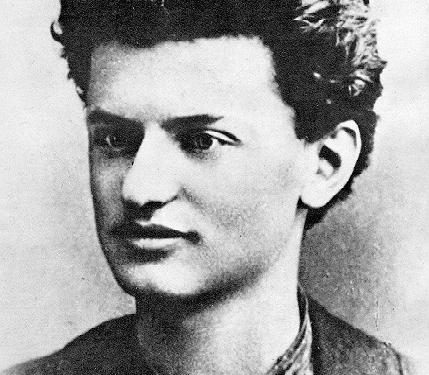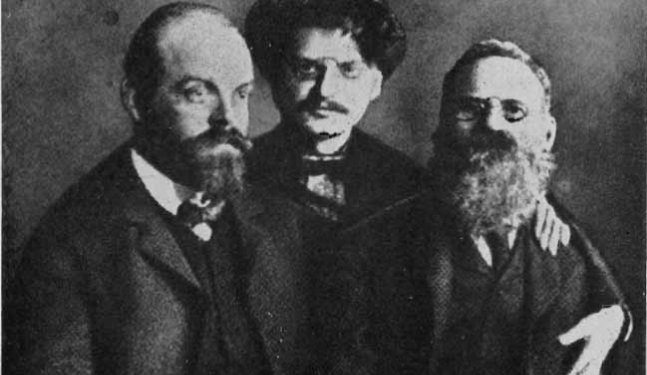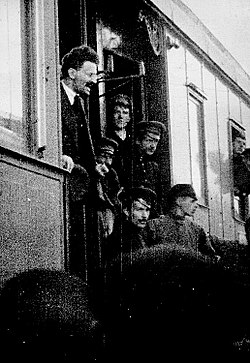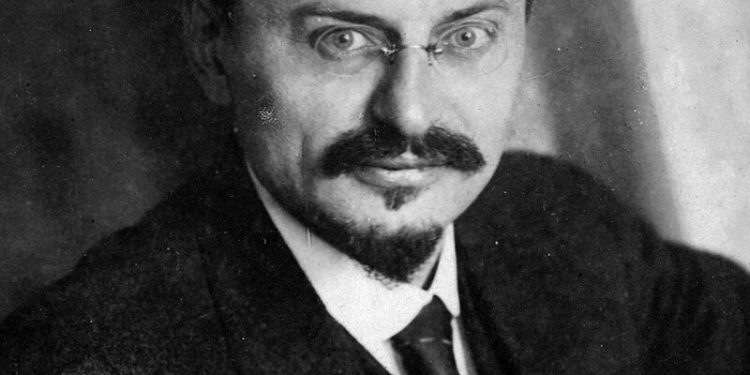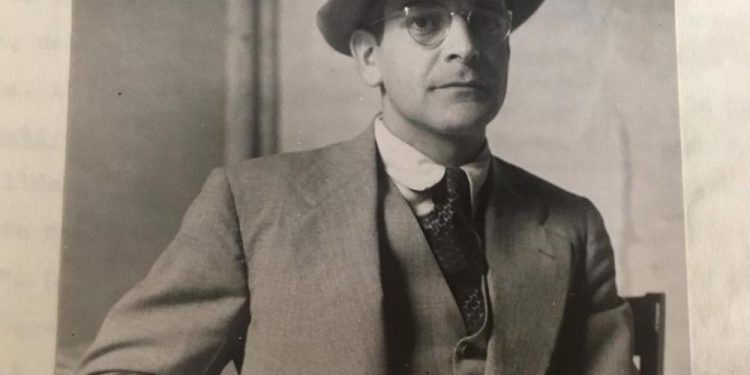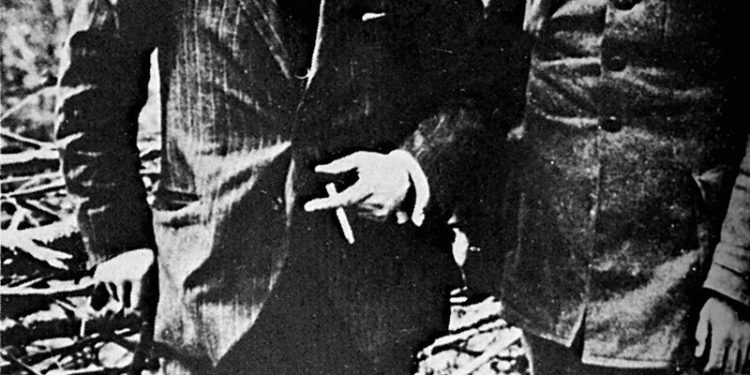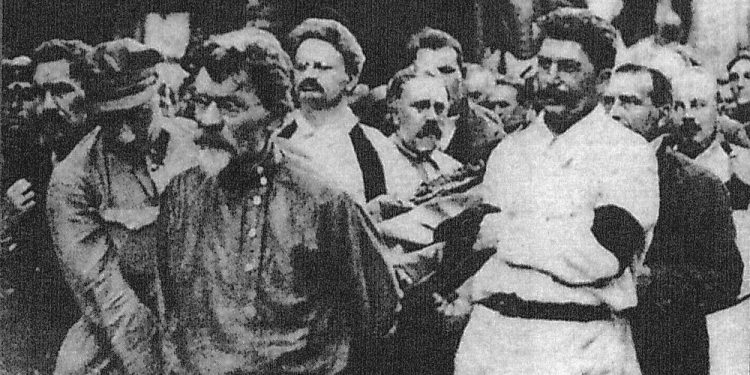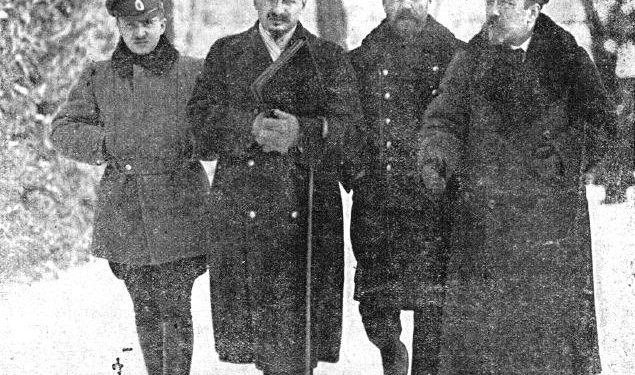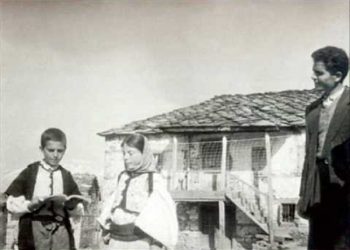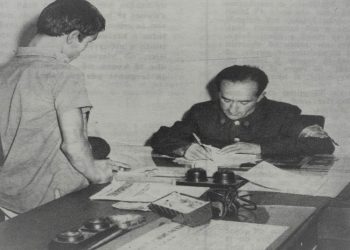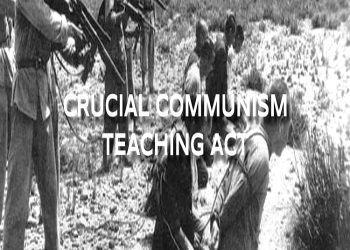STALIN’S PERFECT OPERATION TO ELIMINATE TROTSKY
Memorie.al / The physical elimination of Trotsky (Lev Davidovich Bronstein) is one of the most sophisticated, yet also one of the most criminal operations of the Soviet secret services. In all its stages, this operation was subtle and perfect, leaving no room for failure. It is known that Trotsky, the legitimate successor of Lenin, both intellectually and through his contributions and merits in the victory of the Bolshevik Revolution of 1917 and the Civil War (1918-1922), founder and organizer of the Red Army, was outmaneuvered by Stalin, who rose to the head of the party and the state after Lenin’s death (1924) through trickery and intrigue. Trotsky opposed Stalin on the issue of building socialism in the Soviet Union. In contrast to Stalin, Trotsky believed that socialism could not be built in the Soviet Union without the victory of the revolution in Europe, a view which was proven after 70 years.
Stalin accused Trotsky of being a right-wing deviator who wanted to restore the capitalist order. After numerous debates, Stalin managed to exclude Trotsky from all leading party and state bodies, and even from the party, eventually exiling him to Kazakhstan (1929). The same fate befell Stalin’s other opponents: Bukharin, Zinoviev, Kamenev, and others, who were executed through the infamous and fabricated trials of 1937-1938.
But even in exile, Trotsky continued his fight against Stalin with greater force, which led Stalin to expel him from the Soviet Union. Trotsky settled on an island in the Sea of Marmara, which belongs to Turkey. Even there, Trotsky did not cease to defend his anti-Stalinist views. Under pressure from the Soviet government, Trotsky left Turkey and settled in Norway, where he conducted very intense press activity against Stalinist policy regarding socialist industrialization and the collectivization of agriculture.
Stalin became enraged when he learned that Trotsky had stated in the press that he was preparing a biography of Stalin in which he would reveal all the dark points of his life, his behind-the-scenes actions, and his intrigues for usurping the party and state leadership.
This forced Stalin to demand that the Norwegian government expel Trotsky; otherwise, the Soviet government would sever all trade relations with Norway. Thus, in 1937, Trotsky left Norway and, with the consent of the Mexican government, settled there. At the port of Tampico, where Trotsky disembarked with his wife and young grandson, the President of Mexico himself, Lázaro Cárdenas, and a large number of Mexican Trotskyists came out to greet him.
A special train took Trotsky to his residence in the suburbs of the Mexican capital, which was guarded by many Mexican police. It would quickly turn into a center of anti-Stalinist propaganda. Trotsky sharply exposed the infamous Moscow trials in the Mexican press, which sentenced Stalin’s political opponents to death simply because they held views contrary to his. He even announced that he would soon send Stalin’s biography to the press.
This was enough for Stalin to order the GPU to take the necessary measures to silence Trotsky before he published his biography. The Soviet agency in Mexico, relying on many communist sympathizers of the Soviet regime and Stalin in Mexico, organized an armed attack on Trotsky’s villa one night in May 1940, entering the rooms and shooting with machine guns and automatic rifles. But, fortunately, Trotsky, his wife, and grandson survived unharmed. The plot failed, but not Stalin’s intentions.
After this failure, Stalin ordered that Trotsky be killed at any cost, or else all those involved in the task would be eliminated. It is precisely now that the operation begins. Near the GPU in Moscow, a “Special Section” was created that would deal solely with organizing Trotsky’s murder. At the head of the section was Leonid Eitingon, who was known in the Secret Services by many pseudonyms, such as “Comrade Pabllo,” “Comrade Kotov,” “The General,” etc. This “comrade” was placed in the Mexican capital to direct the operation more closely.
In Mexico, “Comrade Pabllo” (“Kotov”) had a powerful assistant, “Comrade Filip” (real name Grigor Rabinovich), who was a legal person, as he was the representative of the Soviet Red Cross in Mexico, but who was in fact a GPU agent. Both of them had strong support from many Mexican intellectuals who sympathized with Soviet communism and, consequently, with Stalin. These “comrades,” as soon as they received the order from the center, prepared the detailed scheme of the operation. The essence of the operation was this: to find a very trustworthy person who could enter and exit Trotsky’s house.
This could be achieved if this person could establish a relationship with one of the members of Trotsky’s inner personnel, preferably the secretary. Therefore, a girl had to be found to become Trotsky’s secretary. Then, the groundwork had to be laid so that the person who would enter Trotsky’s circle would be a handsome man who would appeal to the secretary and fall in “love” with her. Once this was accomplished, this handsome man would surely one day be introduced to Trotsky by his fiancée.
But for this handsome man to be able to enter Trotsky’s circle freely, a few other things had to be fulfilled. And the masters of the operation made the “handsome man” a journalism student. As such, he could also write articles for newspapers. Drafting such an anti-Stalin article would convince Trotsky of the author’s sincerity.
But the article had to be weak so that Trotsky would be forced to edit it. This would ensure that Trotsky was alone with the author of the article to provide comments and editing. This task was carried out by “Comrade Kotov,” who prepared a very weak article so that Trotsky would have to work on it. And so it was done.
The Operation: The Scheme, Love as a Path to be Close to the Victim
- In early 1938, in a New York bar, a charming lady named Ruby Weil, a GPU agent, “casually” met Silvia Maslova, of Russian origin, who was a Trotsky sympathizer. Silvia’s sister, Ruth, had at one time been Trotsky’s secretary, and Silvia was a member of the “Friends of Trotsky” club in Mexico. This was a guarantee that Silvia could become Trotsky’s secretary or a member of his staff.
- The “charming lady,” as soon as she met Silvia, “liked” her very much, formed a strong “friendship” with her, and never left her side wherever she went.
- Silvia was planning a trip to Paris to attend a conference of the Fourth Socialist International, in which Trotsky had great influence.
- The “charming lady,” as soon as she learned of this trip, in accordance with the operation’s plan, approached Silvia with a request to accompany her to Paris. Silvia accepted. The operation entered the path foreseen by the operation’s leadership team.
- In Paris, the charming lady, during a dinner with Silvia, “accidentally” introduced her to a handsome 25-year-old man named Jacques Ramon. Jacques, according to the operation’s scheme, immediately fell “in love” with Silvia. Thus, one of the most important points of the operation was realized.
- Jacques Ramon posed as a wealthy man from Belgium, where his mother supposedly lived alone. Jacques told Silvia that he was a student at the Faculty of Journalism at the Sorbonne, but Silvia quickly and surprisingly discovered that he was not interested in journalism at all. Jacques lied, but the profession of journalist was needed by the operation’s bosses for something else.
- Jacques in Paris never left Silvia’s side. He toured everywhere with her, frequented very expensive restaurants, bought her costly things, and filled her pockets with money. Silvia lived in ecstasy.
- After finishing her work in Paris, Silvia returned to New York. She asked Jacques to go with her, but he told her that for now, he couldn’t accompany her because he was busy with university studies. Silvia believed him. But in truth, Jacques had been instructed not to accept if Silvia proposed that he go with her to New York, giving the excuse that he was busy with some work. He was supposed to go immediately after her to New York, but not under the name of Jacques Ramon, but under a different name, to lose any trace if someone was watching him.
- But, unexpectedly, Jacques appeared in New York. He met a surprised Silvia and, to reassure her, told her that he had come to New York, supposedly to escape compulsory military service in Belgium, where they had been looking for him for some time. For this purpose, he told Silvia, “I have also changed my name. From now on, I will be Frank Jackson, of Canadian nationality.” Silvia believed him. Frank (Jacques) gave Silvia a false address, claiming to live in a certain hotel that actually did not exist.
- After a few days, Silvia discovered that Jacques (Frank) was carrying a piolet (ice axe) and, surprised, asked him why he carried it. Jacques, following Comrade Kotov’s instructions, said that he was an amateur mountaineer and intended to climb the two highest peaks in Mexico—Popocatépetl and Orizaba—with some Mexican mountaineers.
- As soon as Jacques (now Frank Jackson) arrived in New York, he connected with “Comrade Kotov.”
- Meanwhile, Silvia Maslova, after many recommendations apparently made by “Comrade Kotov’s” people, became Trotsky’s secretary. Thus, another important link in the operation was realized: Silvia’s entry into the Trotsky family meant Jacques’ (Frank’s) entry into it. Meanwhile, Silvia knew nothing about those who arranged this.
- Silvia told the Trotsky couple that she was engaged to Jacques Ramon, a “wealthy man from Belgium” and a journalism student in Paris. They were pleased and congratulated Silvia on the engagement.
- After some time, the Trotskys themselves told Silvia to bring her fiancé for a visit so they could meet him. Silvia brought him. After this, she brought him 2-3 more times. The friendship with the Trotskys was strengthened. Jacques could enter and exit the Trotskys’ home whenever he wanted, and even gave them expensive gifts. The establishment of friendship with Trotsky was the decisive link in the operation. Its finalization was a matter of days.
- Silvia instructed her fiancé never to go to the Trotskys’ house alone, without her accompanying him.
- During one of his subsequent visits (on July 20, 1940), Jacques brought Trotsky an article supposedly written by him (but in fact by “Comrade Kotov”) expressing admiration for the Trotskyist movement and criticizing Stalin. By handing the article to Trotsky, the alibi was created that Jacques (Frank) was truly a journalism student. The “comrades” had wisely considered that this profession was the most suitable for establishing contact with Trotsky. Jacques asked Trotsky to look at the article and edit it for publication in one of the pro-Trotskyist newspapers in Mexico. Trotsky accepted. After Jacques left, Trotsky told Natalia, his wife, that the article was disorganized, messy, and lacked a backbone, but he still decided to edit it. Trotsky told Jacques (Frank) to come another day to the house to review the article together. This is what Jacques and “Comrade Kotov” were waiting for.
- But, impatient as he was, “Comrade Kotov” ordered Jacques to go to Trotsky the next day, with the aim of finishing the “article” as quickly as possible. The next day, August 20, 1940, when “Comrade Kotov” had arranged things so that Silvia would not be with Trotsky, Jacques went to the Trotskys’ residence. Trotsky was watering the flowers in the garden. This time, Jacques was wearing a long overcoat down to his feet and a hat.
Natalia’s attention was drawn to this attire, because the temperature was very high that day, and she asked him why he was dressed so heavily. But he gave an answer that was not clearly understood. Both the question and the answer had been anticipated beforehand by the masters of the operation. Below, it will become clear why Jacques wore the overcoat.
- Trotsky, along with Jacques, went inside the room to look at the article. This was the culminating and decisive link of the operation. In the house, they were alone. Everyone else was outside, and Silvia was absent. Trotsky sat in the chair with the article in front of him on the table, while Jacques stood next to Trotsky, right beside him.
As soon as Trotsky began to read the article and make the necessary comments, Jacques, with lightning speed, pulled the piolet (ice axe with a shortened handle so that it would not stick out from the overcoat) from his overcoat (hence why he wore it) and struck Trotsky forcefully on the head, causing a deep wound. Trotsky fell to the floor, screaming. Jacques tried to deliver a second blow, but struggled with Trotsky while the guards and then the police arrived and arrested Jacques.
- Trotsky was taken to the hospital, where he died the next day, August 21, 1940, and with this, “the operation ended with great success.”
- Stalin expressed his “regret” over the murder he himself had ordered.
The Spaniard with Four Names, Hero of the Soviet Union, the Assassin’s Name Kept Secret Even in the Grave
In court, Jacques Ramon, as instructed by “Comrade Kotov,” declared that he had no plan to murder Trotsky, that the idea of the murder came to him spontaneously because Trotsky was forcing him to go as an agent to the Soviet Union to kill Stalin, other Soviet leaders, and sabotage the country’s economic development in cooperation with Stalin’s opponents there, etc. He did not admit until the end that he was an agent of the Soviet Secret Services and that he had carried out the murder on Stalin’s orders.
In court, he was asked why he did not kill Trotsky with the pistol that was found on him when he was arrested, which would have been safer, or if, by killing him quietly; he had hoped to escape cleanly. “Possibly,” he replied. For this purpose, he had left the car with the engine running outside the gate of Trotsky’s villa, turned in the direction he intended to flee after the assassination, with its door open, so as not to be delayed when leaving.
The masters of the operation were very interested in the murder being carried out quietly, so that the assassin would have the opportunity to leave immediately and thus close the case without it becoming a media problem and without having arguments that the assassination was carried out by Soviet agents, on Stalin’s orders.
Silvia Maslova was called to court as an accused and witness in Trotsky’s murder. Confronting the murderer, she exposed him with uncontrolled hatred and great shock, calling him a traitor and a criminal who met her in order to enter Trotsky’s family, that the money he had received from her was money from Soviet Intelligence, that he had killed Trotsky on Stalin’s orders, etc., etc. The killer did not say a word against Silvia. The court released Silvia as innocent and uninvolved in Trotsky’s murder, while Jacques Ramon was sentenced to 20 years in prison.
In prison, Jacques Ramon was given all the conditions to serve a comfortable sentence. With a room (not a cell) at his disposal, equipped with all the necessary items, with a radio, and the press delivered daily. Furthermore, women were even brought to him to sleep with every week. Jacques Ramon was released from prison in 1960, having completed all the years and days of his sentence. He first went to Moscow, which he served with one of the most macabre acts in the history of the Secret Services, then to Czechoslovakia, and finally to Cuba, where he died in 1978, at the age of 65. When he committed the murder, he was only 27 years old.
Jacques’ ashes are buried in Moscow. On the epitaph of his grave is written: “Lopes Ramon Ivanovich, Hero of the Soviet Union.” It seems that the secret of his real name was preserved even in the grave.
The real name of the killer is still unclear. Only 3-4 people from the GPU (NKVD) may know it accurately. Here are some of his names: Jacques Mornard, Jacques Mornard Jackson, Jacques Mornard Vandendresch, Lopes Ramon Ivanovich, Frank Jackson, Ramón Mercader del Río. The latter is thought to be his real name.
He is Spanish, and in the archives of the Spanish police, he is listed as having been convicted for pro-Soviet communist activities and released from prison in 1936, after the victory of the Popular Front in Spain. At this time, he must have been recruited by GPU agents, who were numerous in Spain at that time.
In a response he gave to journalists after his release from prison, Jacques Ramon said: “How can you not understand that it was a different time? If what happened then could be repeated now, I would behave and act in a different way.” There is no remorse, no pangs of conscience in this answer. But can criminals and paid assassins have such qualities?
The Testament: “I Believe in the Communist Future”
Before his murder, Trotsky wrote in his testament: “Whatever the causes of my death, I shall die with an unshakable faith in the communist future. This faith in man and his future gives me a power of resistance that no religion can give me. Beyond the window, I can see the green grass and the blue sky and everywhere the sunlight. Life is beautiful. Let the future generations cleanse it of all evil, oppression, and violence.”
His real name is Lev Davidovich Bronstein, a communist revolutionary and theorist. He was president of the Petrograd Soviet during the revolutions of 1905 and 1917. He was also a talented writer; his party comrades nicknamed him “The Pen.” During the struggle against Stalin, during the years 1928, he was expelled from the party and banished from the Soviet Union. He was killed in Mexico by a Soviet agent. Trotsky’s ideas form the basis of the current communist movement of the “Trotskyists.” / Memorie.al




